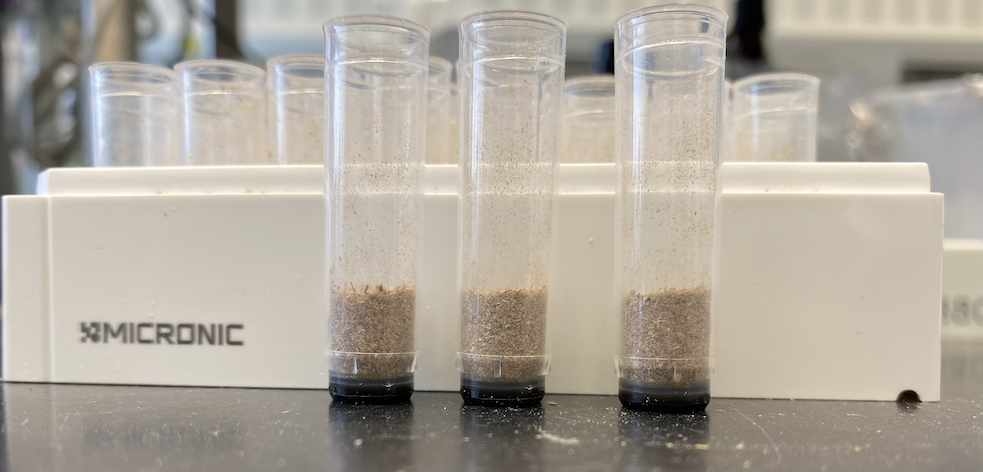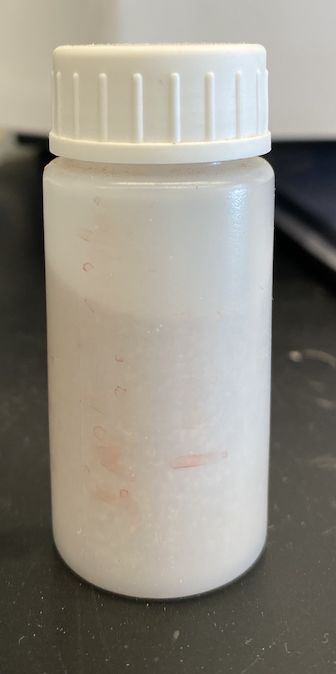Feedstocks-to-Fuels Pipeline (F2F)
Hector Garcia Martin, Christopher J Petzold, Venkataramana R Pidatala, Mengziang Lei, Hemant Choudhary, Blake A Simmons, John Gladden, Alberto Rodriguez
Abstract
Sustainably grown biomass is a promising alternative to produce fuels and chemicals and reduce the dependency on fossil energy sources. However, the efficient conversion of lignocellulosic biomass into biofuels and bioproducts often requires extensive testing of components and reaction conditions used in the pretreatment, saccharification, and bioconversion steps. This restriction can result in an unwieldy number of combinations of biomass types, solvents, microbial strains, and operational parameters that need to be characterized, turning these efforts into a daunting and time-consuming task. Here we developed a high-throughput feedstocks-to-fuels screening platform to address these challenges. The result is a miniaturized semi-automated platform that leverages the capabilities of a solid handling robot, a liquid handling robot, analytical instruments, and a centralized data repository, adapted to operate as an ionic-liquid-based biomass conversion pipeline. The pipeline was tested by using sorghum as feedstock, the biocompatible ionic liquid cholinium phosphate as pretreatment solvent, a “one-pot” process configuration that does not require ionic liquid removal after pretreatment, and an engineered strain of the yeast Rhodosporidium toruloides that produces the jet-fuel precursor bisabolene as a conversion microbe.
Steps
Ionic liquid synthesis
Synthesize the ionic liquid (IL) cholinium phosphate by titrating cholinium hydroxide (Sigma-Aldrich CAS # 123-41-1) with phosphoric acid (Sigma-Aldrich CAS # 7664-38-2) at a 3:1 mole ratio inside a fume hood. Place cholinium hydroxide in a round bottom flask with a magnetic stirrer on an ice bath attached to a burette containing phosphoric acid. Use slow dripping to complete the reaction overnight. Lyophilize the IL for 3 days at -50 ºC to reach a semi-solid consistency.
Cholinium hydroxide and phosphoric acid come mixed with water and the percentage may vary based on the manufacturer. Calculate the mole ratio based on the specific amounts.
Biomass dispensing
Dispense biomass from scintillation vials into Micronic vials using the Labman robot by following the protocol listed below.
For 15% biomass loading: Transfer 225mg of ground biomass into 4 mL Micronic vials (in a 48 vial holder) using the Labman.

Feedstocks-to-Fuels Labman solid biomass dispensing protocol
Pretreatment
Prepare a mixture of 5% IL (w/w) and 80% (w/w) water and add the mixture to each vial by using a liquid handling robot or multichannel pipette.
Cap the vials and autoclave the plate with the vials at 121°C for 3h 0m 0s. Remove the plate from the autoclave after cooling.
Enzymatic hydrolysis
Measure the pH of the biomass after pretreatment and adjust it to a range of 4.8 - 5.2 using 1Molarity (M) citrate buffer, pH 5.0.
Prepare a mixture of CTec3:HTec3 enzymatic cocktails at a 9:1 volume ratio. Add the mixture to the pretreated biomass in each vial at a final ratio of 10 mg of enzyme per g of biomass.
1000µL of enzyme mix contains 104 mg of enzyme. In this protocol, 20µL of enzyme mix was used.
Incubate the plate at 50°C for 72h 0m 0s.
Sugar analysis
Centrifuge the plates in a benchtop plate centrifuge at 4000 rpm for 10 min to precipitate the solid fraction from the aqueous hydrolysate. Transfer 50 µL of hydrolysate from each vial to a 96-well 0.45 µm filter plate using a liquid handler or multichannel pipette. Place the filter plate on top of a collection plate and spin the plate in a benchtop centrifuge at 4000 rpm for 10 min.
Prepare samples for HPLC by diluting the filtered hydrolysates 20 times with water (10 µL sample + 190 µL water) in a Bio-Rad hard shell 96-well plate (Cat # HSP9601). Samples can also be stored at -20°C until analysis.
Analyze the samples in an Agilent Inifinity 1260 HPLC equipped with an Aminex HPX-87H column, using 4 mM sulfuric acid as mobile phase, 0.6 mL/min flow rate, 60 ºC column temperature, 20 min run time and a refractive index detector kept at 35 ºC during analysis. Integrate the peak areas and compare to calibration curves made with pure glucose and xylose standards.
Fermentation
pH adjustment
To adjust the pH before microbial cultivation, mix 800 µL of the 0.45 µm filtered hydrolysate with 150 µL of 1 N NaOH and 150 µL of 0.5 M phosphate buffer pH 7.0.
Transfer 1000 µL of the pH-adjusted hydrolysate to a 0.2 µm filter plate, spin at 4000 rpm for 30 min and collect the filtrate in a sterile plate. Use the filtered hydrolysate for the fermentations.
Growth and adaptation of Rhodosporidium toruloides Rhodosporidium toruloides
Streak Rhodosporidium toruloides strain GB2 on an agar plate prepared using yeast peptone dextrose (YPD) medium and the antibiotics cefotaxime (100 µg/mL) and nourseothricin (50 µg/mL), and incubate it for 2 days at 30 C.
Inoculate a colony from the plate in 2 mL of liquid YPD medium and grow at 30°C for 48h 0m 0s at 200 rpm shaking speed.
Adapt the cells to the hydrolysate by preparing a mixture of hydrolysate:YPD (50:50), inoculate with cells from the YPD culture, and grow for 2 days. Use this culture for inoculating the pure hydrolysates.
Inoculation of hydrolysates
Transfer 800µL of the 0.2 µm filtered hydrolysates into individual wells of a 48-well flower plate (M2P-labs.com, Cat # M2P-MTP-48-OFF) using a multichannel pipette.
Prepare a 50X stock of filter-sterilized ammonium sulfate (250 g/L). Add ammonium sulfate to the hydrolysates to reach a final concentration of 5 g/L. Add cefotaxime 100 µg/mL (Sigma cat # C7039) to the hydrolysates.
Measure the OD 600nm of the adapted R. toruloides GB2 culture using a non-inoculated hydrolysate as blank. Calculate the volume of the culture required to have a starting O.D. of 0.5 and inoculate the hydrolysates.
Add 200 µL of Durasyn 164 (INEOS Oligomers, USA) to the hydrolysates as overlay (25% of the culture volume). Cover the plate with a gas permeable sealing film (M2P-labs.com, product # F-GPR48-10).
Incubate the plate at 30°C and 900 rpm in a Multitron incubator (Infors HT, USA) with humidity control (>70% humidity) for 7 days.
Remove the plate from the incubator. Transfer all the contents into clean 1.4 mL micronic tubes. Allow the aqueous phase and Durasyn layers to separate by leaving on the bench for about 15 min. Transfer 0.1 mL of the aqueous layer into 900 µL of water, measure the OD 600nm of the mixture to determine the microbial growth after cultivation.
Spin the plate containing the 1.4 mL tubes at 400 rpm for 10 min to pellet the cells and separate the aqueous and organic phases.
Bisabolene analysis
Mix 10µL of the overlay with 990µL of ethyl acetate with napthalene (5 mg/L) as internal standard in GC-MS vials.
Analyze samples on a GC-MS Intuvo 9000 instrument using the following method. Column: HP-5ms, inlet temperature: 250 °C, column initial temperature: 80 °C, ramp 20 °C per min until 300 ºC and hold for 3 min. Calculate bisabolene concentrations by integration of the peak area values and compare to the areas obtained from a calibration curve made with pure bisabolene.
Data processing
Compile results from sugar, bisabolene and OD 600 nm measurements and upload to the Experiment Data Depot following the instructions in the protocol below.
Fermentation Process
Bisabolene sampling


